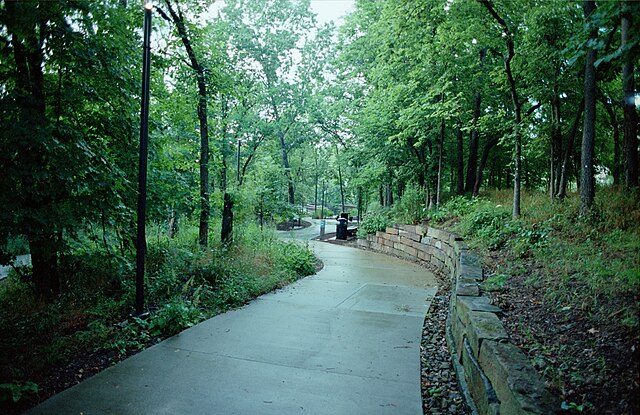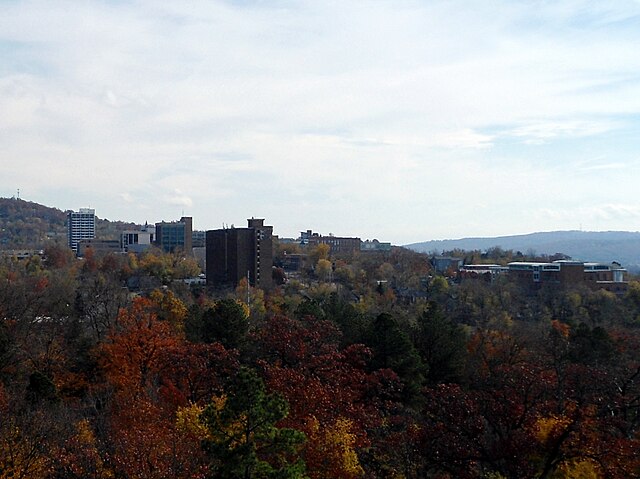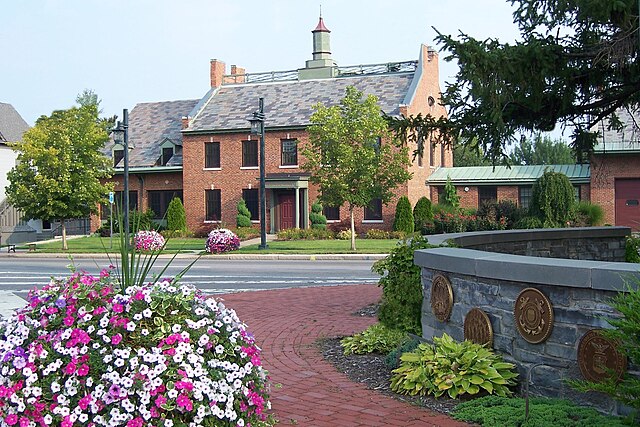Are you planning a trip to Fayetteville, Arkansas, or considering making this vibrant college town your home? Understanding the local weather patterns is crucial for making the most of your time in this beautiful part of the Natural State. Fayetteville’s weather offers a delightful mix of seasons, each bringing its own charm and challenges. Let’s dive deep into what you can expect from the climate in this thriving Arkansas city.
Understanding Fayetteville’s Climate Zone
Fayetteville sits comfortably in the heart of Arkansas, experiencing what meteorologists classify as a humid subtropical climate. But what does that really mean for you as a resident or visitor?
Humid Subtropical Climate Characteristics
This climate zone brings some fantastic benefits to Fayetteville residents. You’ll enjoy relatively mild winters compared to northern states, while summers provide plenty of warmth for outdoor activities. The humidity levels remain moderate to high throughout most of the year, creating lush green landscapes that Arkansas is famous for.
The humid subtropical climate means you’ll experience four distinct seasons, each with its own personality. Spring arrives with a burst of color, summer brings warm temperatures perfect for lake activities, fall showcases stunning foliage, and winter provides a gentle respite without the harsh conditions found in more northern climates.
Geographic Influences on Weather Patterns
Fayetteville’s location in the Arkansas River Valley significantly impacts its weather patterns. The city sits at approximately 1,400 feet above sea level, nestled among the Boston Mountains to the south and the Springfield Plateau to the north. This unique positioning creates some interesting weather phenomena.
The surrounding topography helps moderate extreme temperatures, creating microclimates that can vary even within the city limits. You might notice that areas closer to the University of Arkansas campus experience slightly different conditions than neighborhoods on the outskirts of town.
Seasonal Weather Breakdown in Fayetteville

Understanding each season’s characteristics will help you pack appropriately and plan activities that align with the weather conditions.
Spring Weather (March-May)
Spring in Fayetteville is arguably one of the most beautiful times of year. The season brings a sense of renewal that you can literally feel in the air.
Temperature Ranges and Precipitation
Spring temperatures typically range from the mid-50s to low 70s Fahrenheit. March can still feel quite cool, with average highs around 62°F, while May often reaches comfortable temperatures in the mid-70s. Nighttime temperatures during spring usually hover between 40°F and 55°F.
Precipitation during spring months averages around 4-5 inches per month. You’ll want to keep an umbrella handy, as spring showers are common and can develop quickly. These rain showers are actually beneficial, contributing to the region’s lush green appearance that emerges as winter fades.
What to Expect and Prepare For
Spring weather in Fayetteville can be somewhat unpredictable. One day might feel like summer with temperatures reaching the low 80s, while the next could require a light jacket as temperatures drop back into the 50s. This variability is completely normal for the region.
Severe weather becomes more likely during spring months, particularly in April and May. Thunderstorms can develop rapidly, sometimes producing hail or strong winds. Tornado activity, while not extremely common, is possible during this season.
Summer Weather (June-August)
Summer in Fayetteville brings warm temperatures and high humidity that characterize the region’s subtropical climate.
Hot and Humid Conditions
Summer temperatures typically range from the low 80s to low 90s Fahrenheit during the day. July is usually the hottest month, with average highs around 89°F. Nighttime temperatures provide some relief, generally dropping into the upper 60s or low 70s.
The humidity during summer months can make temperatures feel warmer than they actually are. Heat index values often reach the upper 90s or even exceed 100°F on the hottest days. This combination of heat and humidity means you’ll want to stay hydrated and seek air conditioning during peak afternoon hours.
Storm Patterns and Rainfall
Summer brings afternoon and evening thunderstorms that provide natural air conditioning for the region. These storms typically develop during the hottest part of the day and can produce heavy rainfall in short periods.
Monthly rainfall during summer averages 3-4 inches, though this often comes in intense bursts rather than steady, gentle rain. Flash flooding can occur in low-lying areas during particularly heavy downpours.
Fall Weather (September-November)
Many locals consider fall the perfect time to experience Fayetteville’s outdoor beauty.
Pleasant Autumn Temperatures
Fall temperatures are incredibly comfortable, starting in the low 80s in September and gradually cooling to the 60s by November. October often provides perfect weather with highs in the low to mid-70s and cool, crisp mornings in the 50s.
The humidity levels drop significantly during fall, making outdoor activities much more enjoyable. You’ll find this is an excellent time for hiking, visiting local parks, or attending University of Arkansas football games.
Changing Foliage and Weather Patterns
The changing leaves create a spectacular display throughout the Arkansas countryside surrounding Fayetteville. Peak foliage typically occurs in mid to late October, coinciding with some of the year’s most pleasant weather conditions.
Rainfall decreases during fall months, with October often being one of the driest months of the year. This makes it an ideal time for outdoor festivals and events that Fayetteville is known for hosting.
Winter Weather (December-February)
Fayetteville’s winters are generally mild compared to northern climates, but they do bring their own considerations.
Mild Winters with Occasional Snow
Winter temperatures typically range from the mid-40s to low 50s during the day, with nighttime lows in the upper 20s to mid-30s. January is usually the coldest month, but severe cold snaps are relatively rare.
Snow does fall in Fayetteville, but significant accumulations are uncommon. Most winters see 2-6 inches of total snowfall, often melting quickly due to the moderate temperatures. When snow does stick, it creates a beautiful winter wonderland that locals eagerly photograph and enjoy.
Ice Storm Considerations
Ice storms pose a more significant concern than snow in Fayetteville. These weather events can create hazardous driving conditions and power outages. Ice storms typically occur when warm, moist air overrides cold surface air, creating freezing rain that coats everything in a layer of ice.
Local authorities are well-prepared for these events, and residents have learned to stock up on essentials when ice storms are forecast.
Monthly Weather Averages and What to Expect
Understanding monthly patterns helps you plan everything from vacation timing to wardrobe choices.
Temperature Trends Throughout the Year
January averages around 39°F for daily highs and 21°F for lows. February begins the gradual warming trend with highs around 45°F. March sees significant improvement with average highs of 55°F, while April brings delightful temperatures around 65°F.
May through September maintain warm to hot conditions, with July and August being the warmest months. October provides relief with comfortable temperatures in the 70s, November cools to the 60s, and December returns to winter conditions with highs in the upper 40s.
Precipitation Patterns and Rainfall Data
Fayetteville receives approximately 45-50 inches of precipitation annually, distributed fairly evenly throughout the year. Spring and early summer tend to be the wettest periods, while fall and early winter are typically drier.
The wettest months are usually April, May, and June, each averaging 4-5 inches of rainfall. October and November are often the driest months, receiving around 2-3 inches of precipitation.
Extreme Weather Events in Fayetteville

While Fayetteville’s weather is generally pleasant, understanding potential severe weather helps ensure your safety and preparedness.
Tornado Season and Safety
Tornado season in Arkansas typically runs from March through June, with peak activity in April and May. While Fayetteville isn’t in the heart of “Tornado Alley,” the city does experience tornado threats periodically.
The city has an excellent warning system, and most buildings are equipped with weather radios or alert systems. Knowing your safe places and having an emergency plan is essential for all residents and visitors during tornado season.
Severe Thunderstorms and Hail
Severe thunderstorms can produce damaging winds, large hail, and heavy rainfall. These storms are most common during spring and early summer months when atmospheric conditions favor severe weather development.
Hail ranging from pea-size to golf ball-size has been reported in the Fayetteville area. While rare, larger hail can cause significant property damage to vehicles and roofing.
Ice Storms and Winter Weather Warnings
Ice storms represent the most significant winter weather threat to Fayetteville. These events can shut down the city for several days, making travel extremely dangerous and often causing widespread power outages.
The good news is that ice storms are usually well-forecast, giving residents plenty of time to prepare. Local stores stock up on essentials, and city crews pre-treat roads when ice storms are expected.
Best Times to Visit Fayetteville Based on Weather
Timing your visit to align with favorable weather conditions enhances your experience significantly.
Ideal Weather Months for Outdoor Activities
October stands out as perhaps the best month to visit Fayetteville. The temperatures are comfortable, humidity is low, rainfall is minimal, and the fall foliage is spectacular. September and November also offer excellent weather conditions for outdoor activities.
Spring months, particularly April and May, provide beautiful weather despite the increased chance of storms. The blooming flowers and green landscapes make this an attractive time for photography and hiking.
Peak Tourist Seasons and Weather Considerations
Football season brings many visitors to Fayetteville from September through November. The weather during this period is generally cooperative, though early September games can still be quite warm and humid.
Summer months see increased tourism due to school breaks, but visitors should be prepared for hot, humid conditions and afternoon thunderstorms. Indoor attractions and swimming activities become particularly appealing during these months.
Weather-Related Activities and Attractions
Fayetteville’s diverse weather patterns create opportunities for different activities throughout the year.
Outdoor Recreation by Season
Spring offers excellent hiking conditions as temperatures warm and wildflowers bloom. The numerous trails around Fayetteville provide stunning views of the changing landscape.
Summer activities center around water recreation, with local lakes providing relief from the heat. Evening outdoor concerts and festivals take advantage of cooling temperatures after sunset.
Fall hiking and camping conditions are nearly perfect, with comfortable temperatures and low humidity. This season also brings harvest festivals and outdoor markets that showcase local agriculture.
Winter provides opportunities for different types of outdoor activities, though they’re weather-dependent. When snow does fall, local parks become popular spots for sledding and winter photography.
Indoor Alternatives During Severe Weather
Fayetteville offers numerous indoor attractions for those times when weather doesn’t cooperate. The city’s museums, shopping centers, and entertainment venues provide excellent alternatives during storms or extreme temperatures.
The University of Arkansas campus offers indoor recreational facilities, libraries, and cultural events that remain accessible regardless of weather conditions.
Local Weather Resources and Forecasting
Staying informed about weather conditions is crucial for safety and planning in Fayetteville.
Reliable Weather Services for Fayetteville
The National Weather Service office in Little Rock provides official forecasts and warnings for the Fayetteville area. Local television stations offer detailed forecasts with particular attention to regional conditions.
Several local meteorologists have developed strong followings due to their accurate forecasting and clear communication during severe weather events.
Weather Apps and Alert Systems
Modern technology makes staying informed about Fayetteville weather easier than ever. Weather apps provide real-time radar, hourly forecasts, and severe weather alerts specifically for your location.
The city and county emergency management agencies use various alert systems to notify residents of severe weather threats. Signing up for these services ensures you receive timely warnings about dangerous conditions.
Climate Change Impact on Fayetteville Weather

Like many locations worldwide, Fayetteville is experiencing some changes in its traditional weather patterns.
Observed Changes in Recent Years
Meteorologists have noted slightly warmer average temperatures over the past few decades. Summer heat events may be lasting longer, and winter cold snaps may be less frequent than in previous generations.
Precipitation patterns show some variability, with periods of drought alternating with extremely wet periods. These changes align with broader climate trends observed across the southeastern United States.
Future Weather Projections
Climate models suggest that Fayetteville may experience warmer temperatures in the coming decades, with potentially longer summers and shorter winters. Precipitation patterns may become more variable, with both drought and flood risks potentially increasing.
These projections emphasize the importance of continued monitoring and adaptation strategies for both residents and city planners.
Conclusion
Fayetteville’s weather offers something for everyone throughout the year. From mild winters that rarely require heavy coats to summers perfect for lake activities, the city’s humid subtropical climate creates a comfortable environment for residents and an attractive destination for visitors. While severe weather can occur, particularly during spring months, the city is well-prepared with warning systems and emergency management protocols.
Understanding these weather patterns helps you make the most of your time in Fayetteville, whether you’re planning a weekend visit, considering relocation, or simply want to better appreciate the natural rhythms of this Arkansas gem. The key is staying informed, prepared, and ready to enjoy the beautiful weather that Fayetteville offers most days of the year.
Frequently Asked Questions
1. What is the rainiest month in Fayetteville, AR?
May typically receives the most rainfall in Fayetteville, averaging around 5 inches. Spring months generally see the highest precipitation due to increased storm activity and favorable atmospheric conditions for thunderstorm development.
2. Does Fayetteville get tornadoes, and when is tornado season?
Yes, Fayetteville can experience tornadoes, though they’re not extremely common. Tornado season runs from March through June, with peak activity in April and May. The city has excellent warning systems and emergency preparedness protocols in place.
3. How cold does it get in Fayetteville during winter?
Winter temperatures in Fayetteville are relatively mild, with average highs in the 40s-50s°F and lows in the 20s-30s°F. January is typically the coldest month, but severe cold snaps are uncommon due to the region’s subtropical climate.
4. What’s the best time of year to visit Fayetteville for outdoor activities?
October is considered the ideal month for outdoor activities in Fayetteville, offering comfortable temperatures, low humidity, minimal rainfall, and beautiful fall foliage. September and November also provide excellent conditions for hiking, camping, and other outdoor pursuits.
5. How much snow does Fayetteville typically receive each winter?
Fayetteville averages 2-6 inches of snow annually, though significant accumulations are rare. Most snow melts quickly due to moderate temperatures. Ice storms pose a greater winter weather concern than snow, potentially causing hazardous conditions and power outages.

